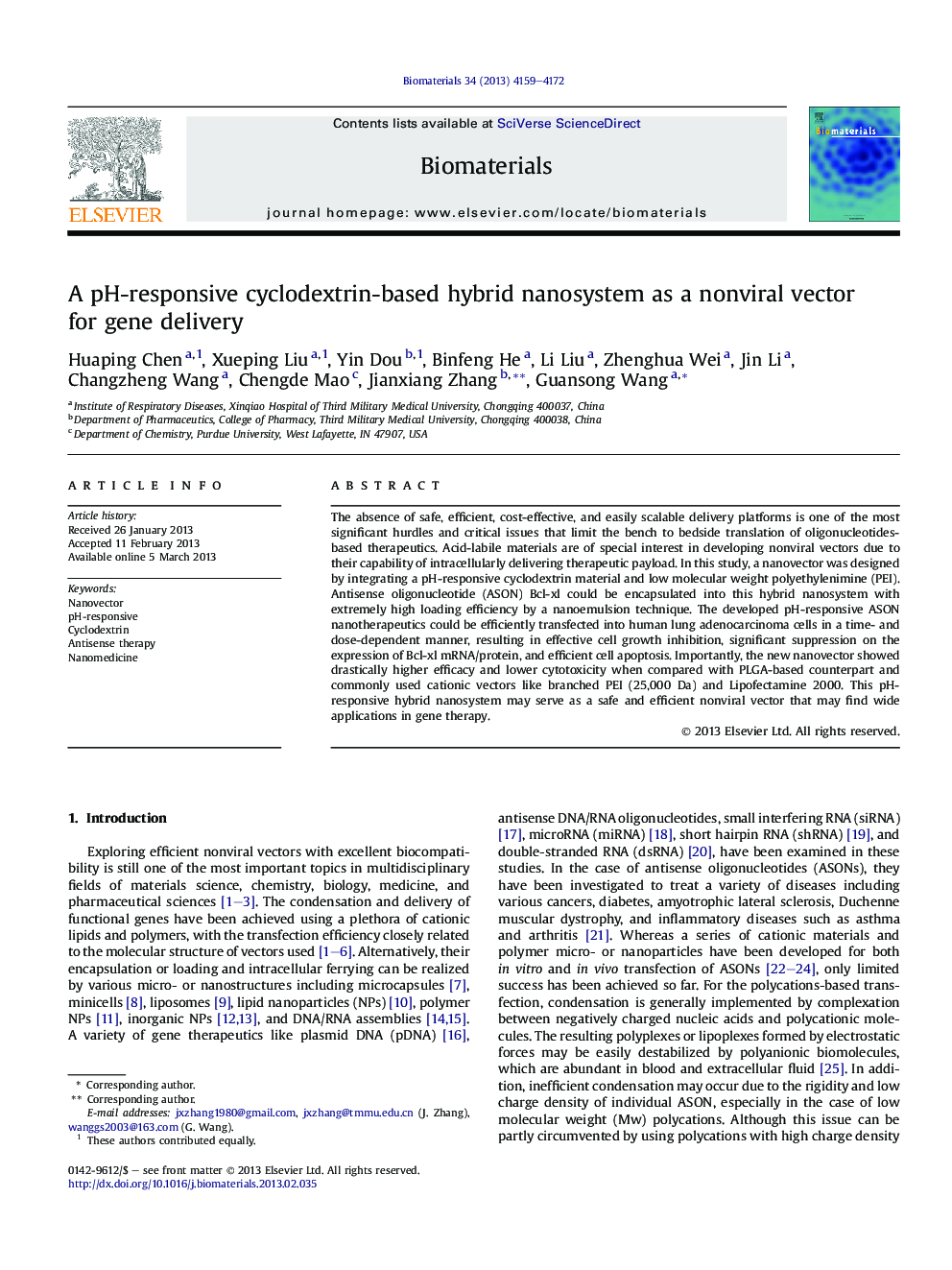| Article ID | Journal | Published Year | Pages | File Type |
|---|---|---|---|---|
| 6167 | Biomaterials | 2013 | 14 Pages |
The absence of safe, efficient, cost-effective, and easily scalable delivery platforms is one of the most significant hurdles and critical issues that limit the bench to bedside translation of oligonucleotides-based therapeutics. Acid-labile materials are of special interest in developing nonviral vectors due to their capability of intracellularly delivering therapeutic payload. In this study, a nanovector was designed by integrating a pH-responsive cyclodextrin material and low molecular weight polyethylenimine (PEI). Antisense oligonucleotide (ASON) Bcl-xl could be encapsulated into this hybrid nanosystem with extremely high loading efficiency by a nanoemulsion technique. The developed pH-responsive ASON nanotherapeutics could be efficiently transfected into human lung adenocarcinoma cells in a time- and dose-dependent manner, resulting in effective cell growth inhibition, significant suppression on the expression of Bcl-xl mRNA/protein, and efficient cell apoptosis. Importantly, the new nanovector showed drastically higher efficacy and lower cytotoxicity when compared with PLGA-based counterpart and commonly used cationic vectors like branched PEI (25,000 Da) and Lipofectamine 2000. This pH-responsive hybrid nanosystem may serve as a safe and efficient nonviral vector that may find wide applications in gene therapy.
